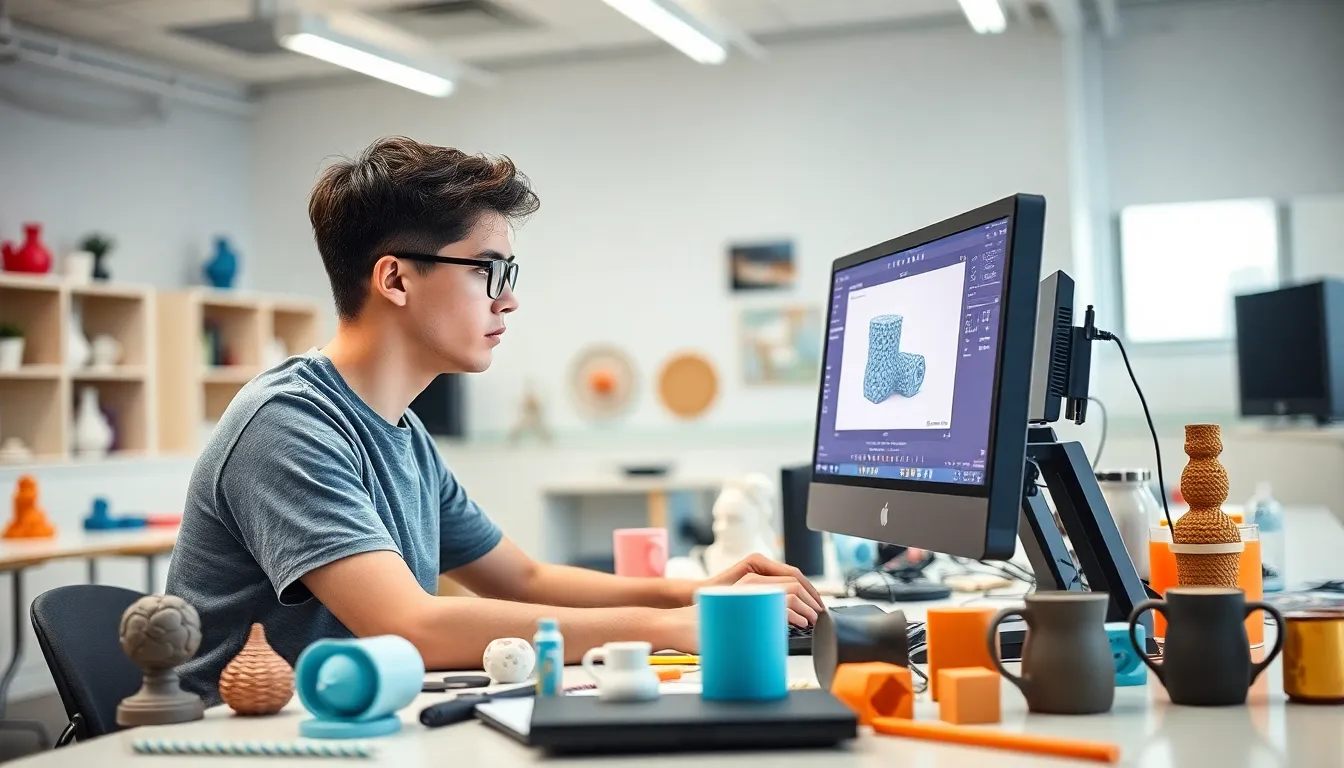In a world where creativity meets technology, 3D printing classes are the golden ticket to turning wild ideas into tangible reality. Imagine crafting everything from quirky coffee mugs to intricate sculptures—all without the hassle of traditional manufacturing. It’s like magic, but with a lot more math involved.
Table of Contents
ToggleOverview of 3D Printing Classes
3D printing classes offer a hands-on approach to learning cutting-edge technology. Participants explore various techniques in design, modeling, and printing, gaining valuable skills for personal or professional projects. These courses typically cover software used for creating 3D models, such as Tinkercad and Blender, as well as the types of printers available.
Fundamentals of 3D printing are crucial aspects taught in these classes. Students understand essential concepts like layer adhesion, material properties, and the importance of design for manufacturability. Experimenting with different materials, including PLA, ABS, and resin, enhances the learning experience.
In addition to technical skills, creativity flourishes during projects. Classes prompt participants to collaborate, share ideas, and inspire one another. Through group activities, individuals realize the potential for custom designs, from everyday items to intricate art pieces.
Various institutions offer 3D printing classes, tailored for beginners and advanced users alike. Community colleges, makerspaces, and online platforms provide numerous options to accommodate diverse schedules and learning preferences. Each class tends to feature a balance of theoretical knowledge and practical application, ensuring that learners can translate concepts into real-world items.
Networking opportunities often arise in these environments. Participants connect with industry professionals, fellow enthusiasts, and potential collaborators, broadening their horizons within the field of 3D printing. Those engaged in these classes frequently find pathways to careers in product design, engineering, or digital artistry, making them a wise choice for aspiring innovators.
Benefits of Taking 3D Printing Classes

Taking 3D printing classes provides numerous advantages for participants. Skill enhancement stands at the forefront.
Skill Development
Skill development occurs through practical experience in design and engineering. Participants learn to operate essential software like Tinkercad or Blender with hands-on projects. Drawing from real-world applications, students grasp layer adhesion and material properties. Engaging in collaborative projects fosters creativity and problem-solving. Learning diverse techniques in modeling equips individuals with invaluable expertise, whether for hobbies or career aspirations.
Career Opportunities
Career opportunities emerge alongside enhanced skills. Industries such as product design, manufacturing, and engineering increasingly demand proficiency in 3D printing. Participants can network with professionals in these fields, creating pathways to internships and job offers. Exploration of cutting-edge technology through courses positions graduates as competitive candidates. Pursuing certification or advanced training can further advance one’s career, leading to specialized roles in digital artistry or prototyping.
Types of 3D Printing Classes
Numerous types of 3D printing classes cater to various learning preferences and skill levels. Participants can choose from online courses and in-person workshops, each offering unique advantages.
Online Courses
Online courses provide flexibility for learners who prefer studying at their own pace. Generally, these classes feature video tutorials, interactive assignments, and community forums for feedback. Platforms like Udemy and Coursera offer comprehensive lessons on software such as Autodesk Fusion 360 and Tinkercad. Participants gain access to diverse resources, including project templates and troubleshooting guides. Many online courses also cover advanced topics like 3D scanning and design optimization, enhancing the learner’s ability to create prototypes.
In-Person Workshops
In-person workshops offer hands-on experience that encourages skill development. Typically, these sessions facilitate direct interaction with instructors and peers. Participants can utilize professional-grade equipment, such as industrial 3D printers and software applications. Many workshops emphasize teamwork, inspiring creativity through collaboration on joint projects. Access to experienced mentors provides invaluable guidance for mastering techniques. Networking opportunities often arise, connecting participants with industry professionals in local makerspaces and community colleges.
Choosing the Right 3D Printing Class
Selecting the ideal 3D printing class enhances the learning experience. Understanding personal skill levels and interests is vital for making the best choice.
Assessing Your Skill Level
Begin by evaluating your current expertise in 3D printing. Beginners might find introductory courses beneficial, focusing on software basics and fundamental design principles. Those with some experience could benefit from intermediate classes, which emphasize advanced modeling and printing techniques. Advanced users may seek specialized workshops that cater to specific interests, such as prototyping or artistic design. Gaining clarity on skill levels ensures participants enroll in courses that match their abilities and learning goals.
Identifying Your Interests
Consider personal interests when choosing a class. Individuals passionate about product design can focus on courses emphasizing engineering and functionality. For those inclined toward artistry, classes that explore creative design would be more suitable. Exploring different aspects of 3D printing, such as rapid prototyping or functional models, broadens perspectives. Aligning course content with specific interests promotes engagement and enhances the overall learning experience, driving motivation throughout the class.
3D printing classes offer a unique opportunity for individuals to blend creativity with technology. By participating in these courses, learners can develop essential skills that enhance their personal and professional projects. With a variety of formats available, from online courses to hands-on workshops, there’s something for everyone.
The collaborative environment fosters innovation and networking, connecting participants with industry professionals and like-minded enthusiasts. Whether aiming for a career in product design or simply exploring a new hobby, these classes provide the tools and knowledge needed to succeed. Embracing 3D printing education can lead to exciting possibilities and a deeper understanding of this transformative technology.

